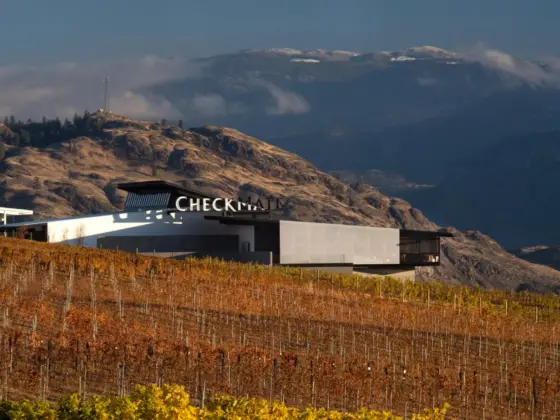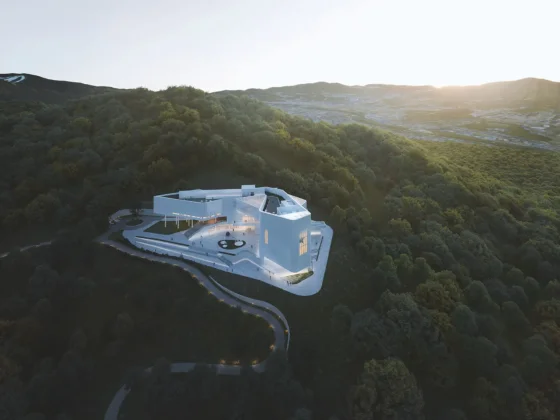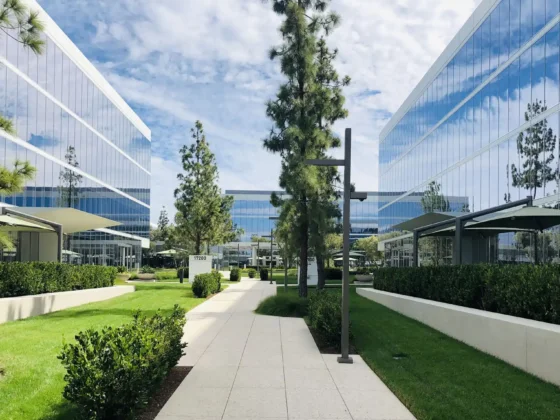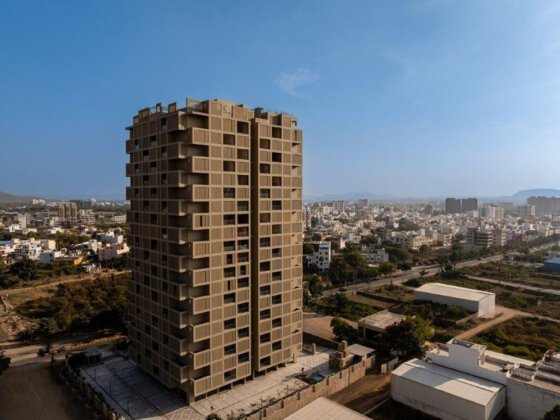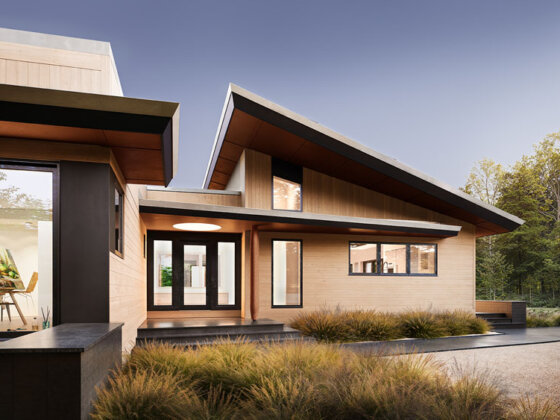Beijing, China
Beijing-based cross-disciplinary practice Field Conforming Studio develops and installs an installation made of nine hollow columns for the Delong Steel Sculpture Art Festival in Tangshan.

This project has recently been awarded a 2023 International Architecture Award by The Chicago Athenaeum: Museum of Architecture and Design and The European Centre for Architecture Art Design and Urban Studies.
Situated in the Delong Steel Art Park which was originally a tidal-flat wetland, with soil conditions not conducive to the growth of trees, the park provides favorable water and grass resources for birds to inhabit, hence becoming a wetland bird reserve.
Field Conforming Studio’s aim is to create a new “landmark” in the park, to counter and mitigate the oppressive feeling and visual abruptness of the large property development, or at least to create a visually progressive spatial relationship in the park’s south zone to strengthen its visual depth.
To that end, the volumes of the work need to extend upwards and meanwhile form a cluster, to ensure both height and spatial volume.
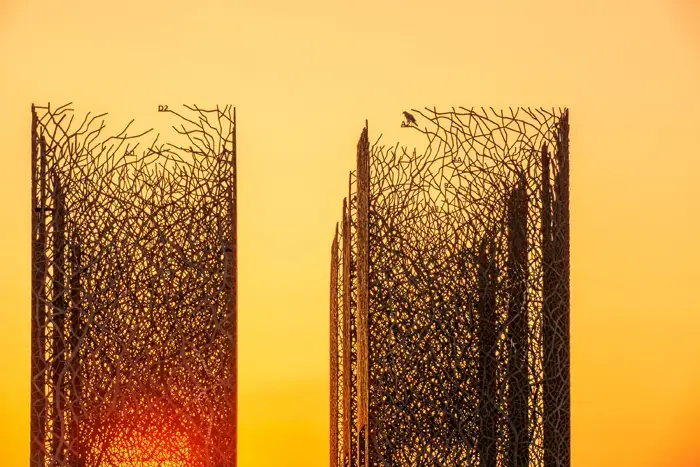
The original plan was to find a relatively higher area within the south zone of the art park and to set a matrix of erecting columns to create the highest point in the park, so as to confront the tower buildings of the property development in the distance.
The square matrix consists of 9 hollow columns, each of which is enclosed by steel panels that were planned to be 7.2m, 2.2m, and 0.02m in length, width, and thickness. The distance between columns was set at 1.5m.
The number of columns and the distance between columns were determined based on a deduction process through models, for the purpose of achieving a strong sense of clustered blocks.
During the construction process, the plans have changed reducing the height of each column from 7.2m to 6m for the sake of saving cost.
This inevitably lowered the overall height of the matrix of columns, but luckily its impact on the overall massing was acceptable as it didn’t affect the magnificent spatial atmosphere.

According to the design team, a public artwork needs to be given “expressions”, and has to convey messages.
Its expressions and narratives need to evoke interaction, and the messages it conveys have to resonate with people’s daily experiences and emotions.
The relationship between the work and the site is important, and the spatial form of the work itself is also essential, but what matters most is the interaction between the work and people.
In public artwork creation, those three aspects are intertwined and hence need to be considered in a holistic way.
The designer thought about how to utilize steel panels and what messages to be conveyed through this neutral material, which to a large extent depends on users’ notions and needs.
Steel is a symbol of modern industrial civilization, but steel panels often give people an impression of coolness, solidness, and heaviness.
To let the work present a sense of dailiness and affinity, he decided to give the steel panels a warm, transparent, and lightweight feel.
To that end, Hu Quanchun converted solid steel panels into the textures of creeper vines to enclose the column space.
To realize that effect, steel panels were treated through a process of laser carving and welding.
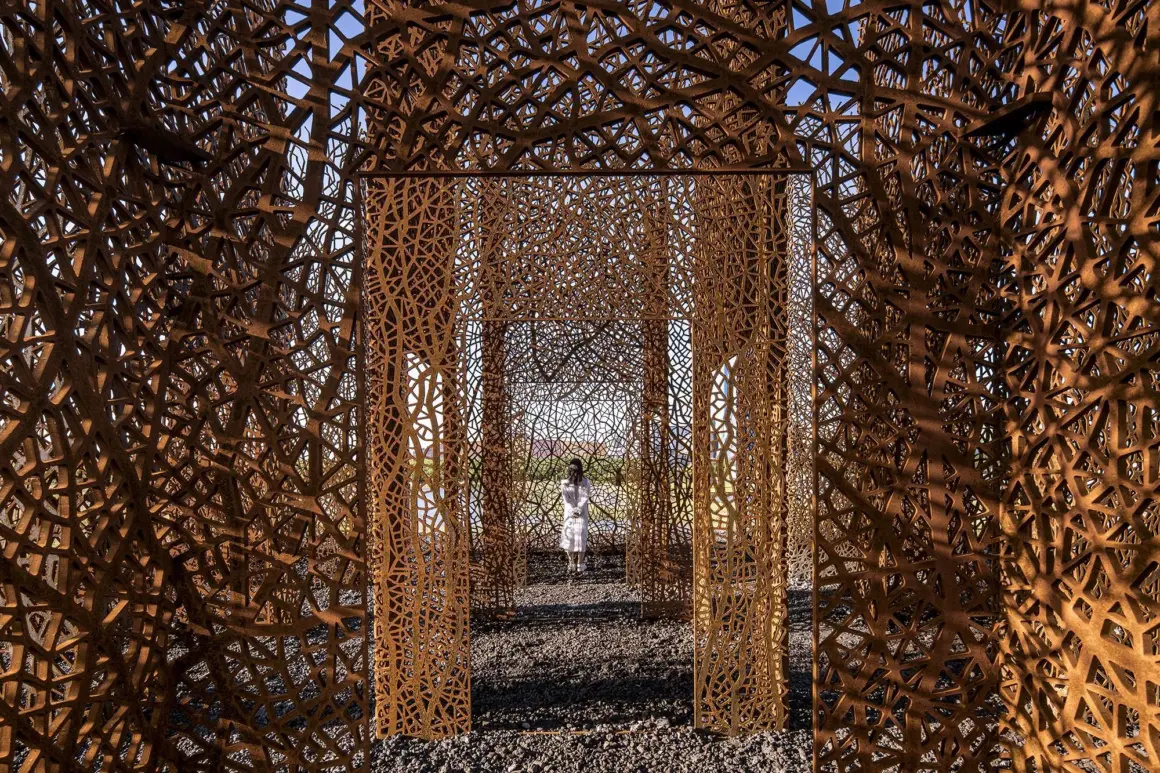
At first glance, the vines-like pattern may seem to be slightly abrupt on the site.
However, its true intention is not for decoration, but to imply the existence of a possible spatial entity.
The concept of creeper vines was explored in Hu Quanchun’s previous design works.
The scene in which creepers sprawl on architecture is very frequently seen in daily life.
When detaching the architectural body, the growing status of the creepers can still reflect the form of the former architectural space.
The designer “detached” the dense, solid columns, and left creeper vines’ textures to outline the silhouette of the original column space and carry its memory.
The laser carving process enhanced the transparency of steel panels.
The twists turns, and joints of “vines” produce rich spatial layers.

To enrich visitors’ experience in the column space, each mesh-like column is set with different openings to create diversified circulation routes and sightlines.
When entering the column space, visitors will be immersed in a spatial realm awash with light and shadows.
While taking a look at it from a distance, it stands out on the site with its dense volumes that blur the real and the virtual.
It presents different visual effects when viewed from different directions or angles, bringing visitors varied experiences.



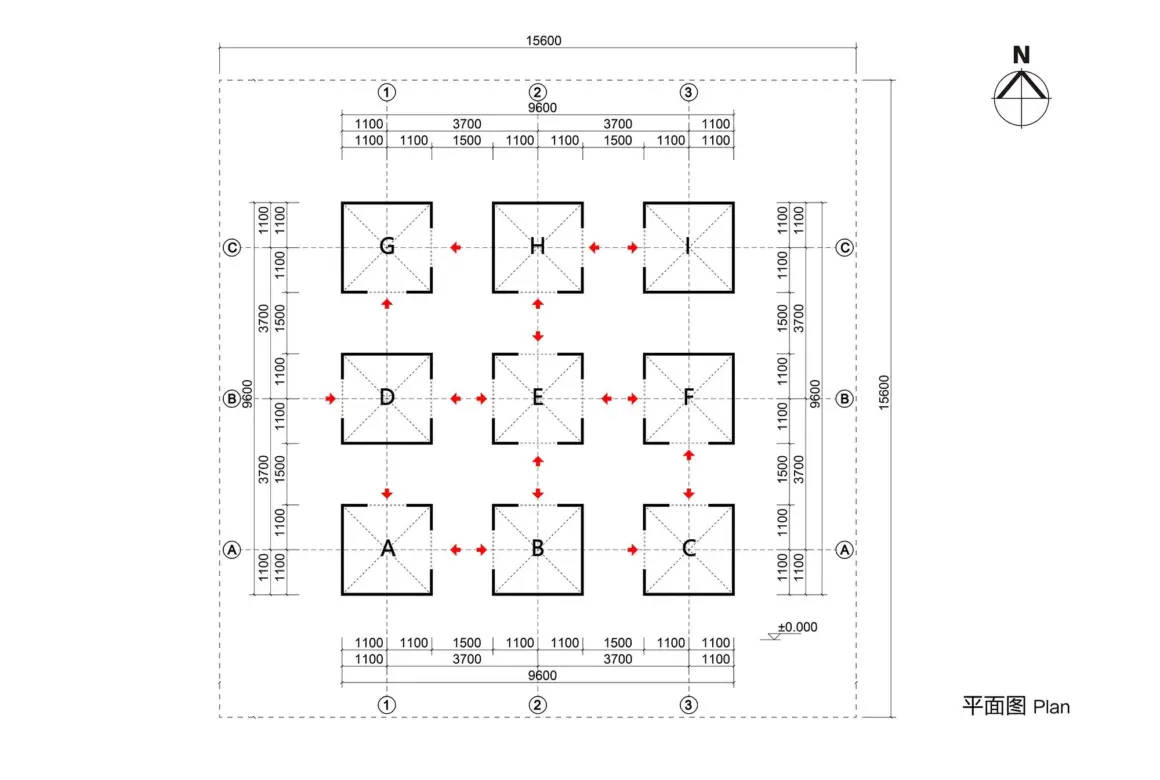
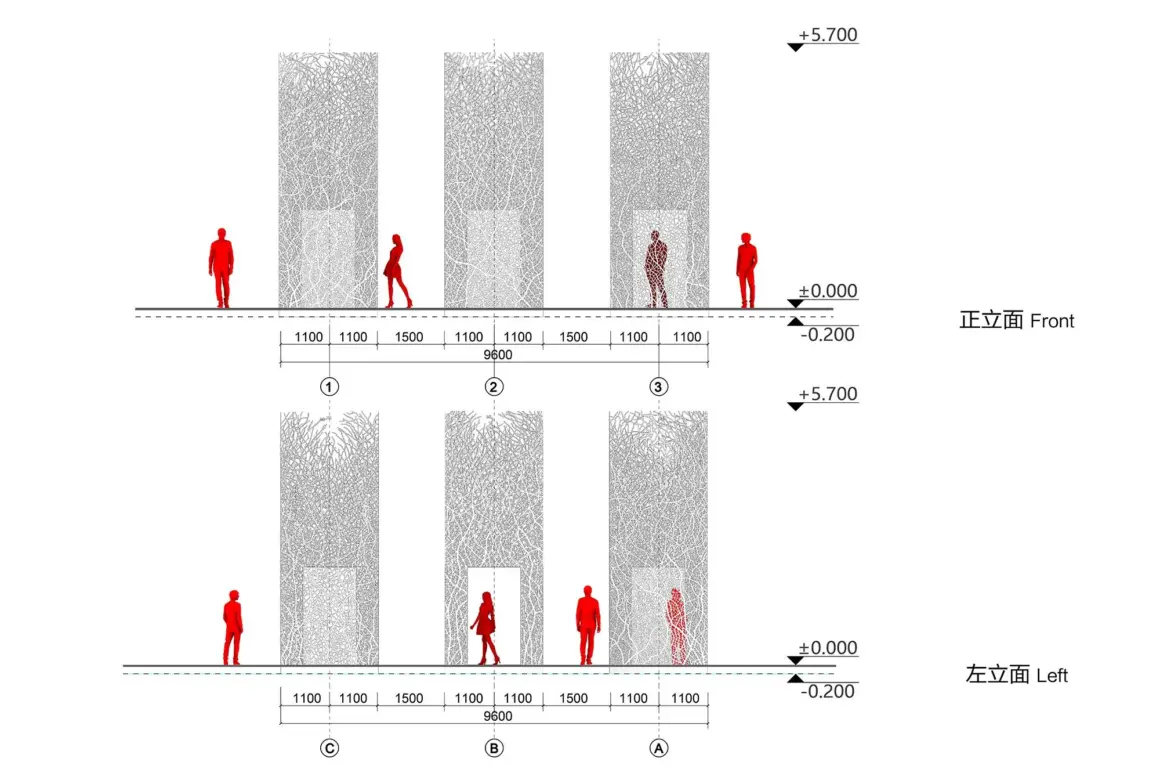
Project: Column Matrix
Architects: Field Conforming Studio
Lead Architect: Hu Quanchun
Design Team: Xiang Yu, Chen Songlin, Yuan Hang, Lu Bowen, Guo Chunzhi, Zhong Chengzhi, Bai Yumeng
General Contractor: Beijing DEZE ART Limited Partnership
Client: Dig Zehua, Beijing DEZE ART Limited Partnership
Photographers: Jin Weiqi



